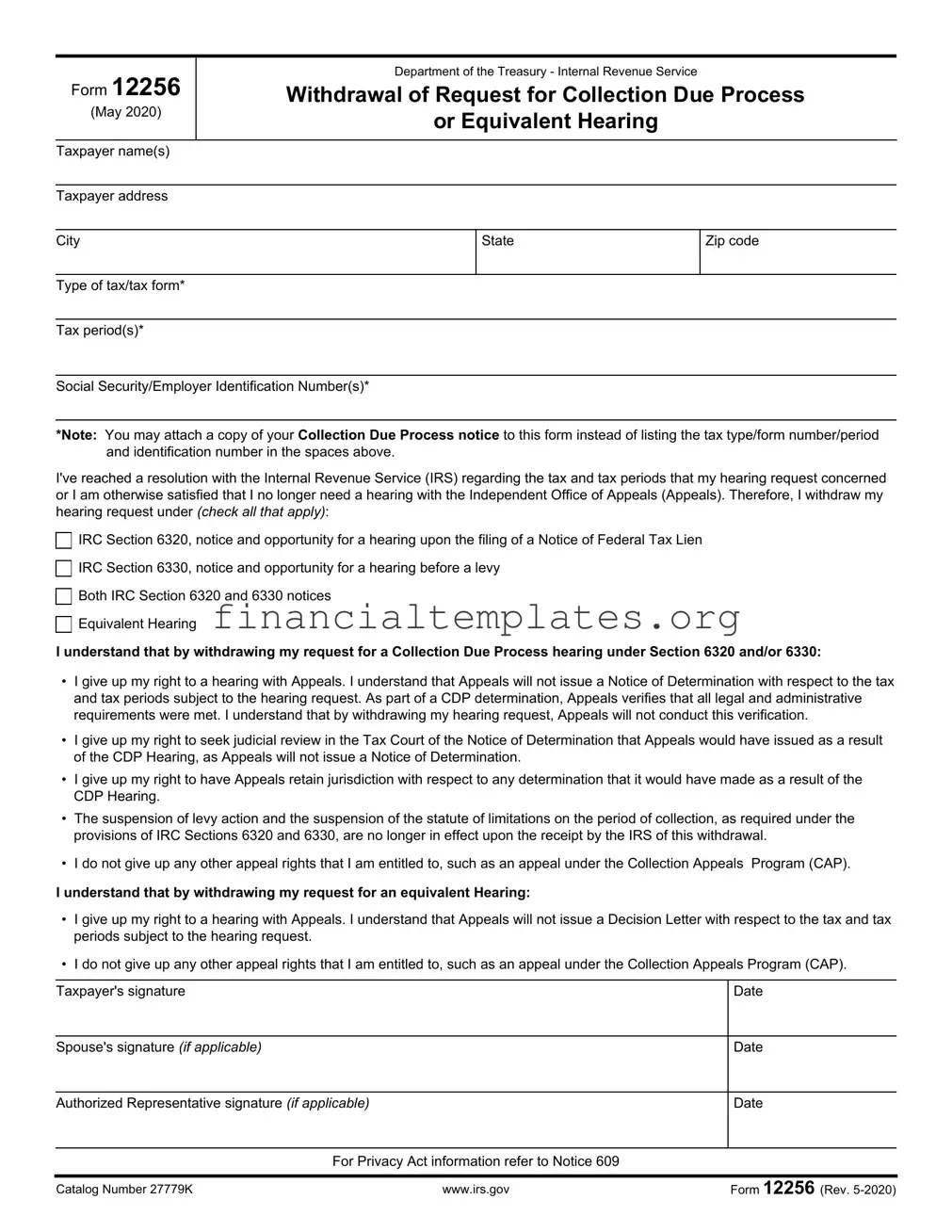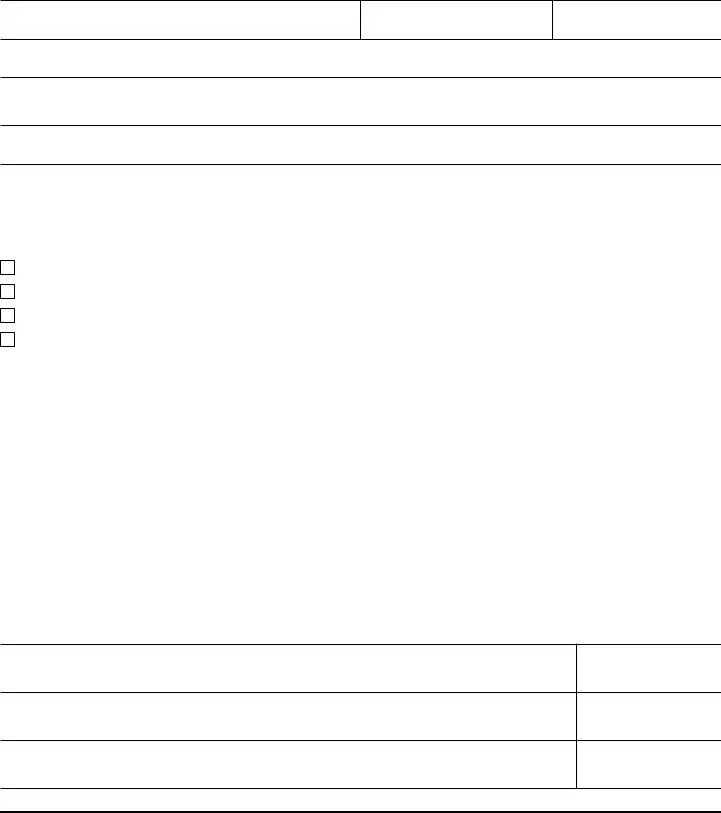The IRS Form 12153, Request for a Collection Due Process or Equivalent Hearing, is closely related to Form 12256 in its purpose and use. Form 12153 is the document taxpayers submit to request a hearing with the IRS Appeals Office regarding a notice of federal tax lien or levy. It's the initial step in contesting the IRS's lien or levy actions, while Form 12256 represents the withdrawal of such a request, essentially the opposite action. Both forms facilitate taxpayer interaction with the IRS's collection due process, yet each serves distinct procedural milestones.
Form 2848, Power of Attorney and Declaration of Representative, shares a procedural connection with Form 12256, particularly in instances where a taxpayer opts to have a representative withdraw a Collection Due Process request on their behalf. The Power of Attorney form authorizes individuals to represent taxpayers before the IRS, encompassing activities from submitting forms to speaking on behalf of the taxpayer. When a taxpayer's authorized representative completes Form 12256, it often follows that a Form 2848 was previously submitted to establish that representation legally.
IRS Form 656, Offer in Compromise, and Form 12256 are connected through the resolution of tax liabilities. Form 656 is used by taxpayers to propose a settlement to the IRS, paying less than the full amount owed. Taxpayers who have submitted Form 656 may later find themselves filling out Form 12256 to withdraw a Collection Due Process or Equivalent Hearing request if they reach an agreement with the IRS through the Offer in Compromise process, thereby resolving their tax issues.
IRS Form 9465, Installment Agreement Request, is relevant to those considering Form 12256 as it also relates to resolving tax liabilities but through a different mechanism. When taxpayers arrange to pay their debts over time with an installment agreement, they may decide to withdraw their Collection Due Process Hearing request using Form 12256, especially if the installment agreement sufficiently addresses their situation, making the need for a hearing moot.
IRS Form 9423, Collection Appeal Request, provides an alternative appeals process for taxpayers who disagree with certain collection actions. Unlike the Collection Due Process (CDP) hearing requested via Form 12153 and withdrawn via Form 12256, the Collection Appeals Program (CAP) allows for a different avenue of IRS dispute resolution. Taxpayers might opt to withdraw their CDP request if they choose to pursue their case through the CAP instead, suggesting a strategic decision in navigating IRS processes.
IRS Form 8379, Injured Spouse Allocation, although primarily related to allocating tax obligations between spouses, intersects indirectly with Form 12256 situations. A taxpayer who has filed Form 8379 due to concerns about their tax refund being applied to a spouse's debt might initially request a Collection Due Process hearing to contest a levy affecting their refund. However, upon resolution of the injured spouse claim, they might then withdraw the hearing request using Form 12256 if the issue becomes moot.
Form 433-F, Collection Information Statement, is utilized by taxpayers to provide the IRS with financial information necessary to determine payment options for outstanding taxes, similar to Form 656 or 9465 processes. Taxpayers who have entered into negotiations with the IRS about their debt by submitting Form 433-F may concurrently opt to withdraw a previously requested Collection Due Process hearing using Form 12256, particularly if they are nearing a resolution about their payment options or if the form aids in securing an installment agreement or offer in compromise.
Form 668(Y), Notice of Federal Tax Lien, is directly connected with the need for or withdrawal of a Collection Due Process hearing. This form represents the action taken by the IRS to claim a legal right to the taxpayer's property for unpaid tax debts, which might prompt the taxpayer to request a hearing by filing Form 12153. Conversely, Form 12256 allows a taxpayer to withdraw such a request, possibly because of a resolution achieved with the IRS regarding the lien, rendering the request for a hearing unnecessary.

